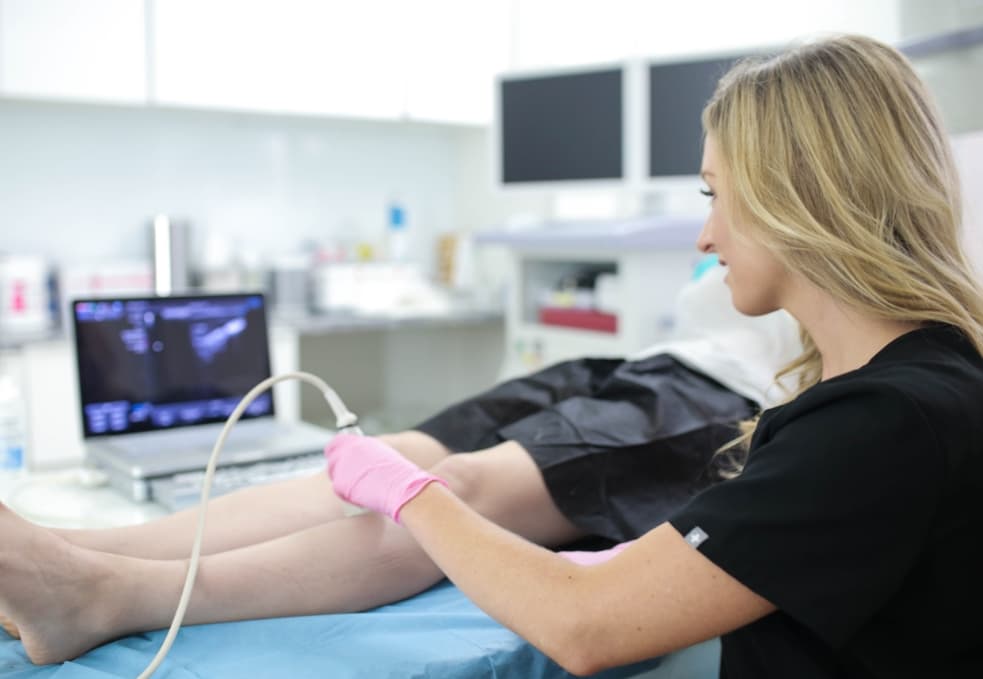If you have noticed twisted, swollen veins on your legs, you may be wondering if varicose veins are dangerous. Varicose veins are a common condition that affects millions of people, particularly women, and they occur when the veins become enlarged and filled with blood. In this comprehensive article, we will discuss the potential risks associated with varicose veins and provide you with valuable information about their causes, symptoms, and available treatments.
As a leading group of medical centers for vein treatment in Long Island, we, at Long Island Vein Treatment, is dedicated to helping you understand and manage your vein health.
Understanding Varicose Veins
To fully comprehend the potential dangers associated with varicose veins, it is crucial to gain a comprehensive understanding of their nature and how they develop. Varicose veins commonly occur in the legs and feet, where blood vessels face the challenging task of working against gravity to return blood to the heart. The development of varicose veins is attributed to a malfunctioning of the valves within the veins. When these valves fail to function properly, blood pools within the veins, leading to their enlargement and the distinctive appearance of bulging, twisted varicose veins.
Risk Factors for Varicose Veins
The development of varicose veins can be influenced by various factors that increase the likelihood of their occurrence. Age is a significant factor, as the risk tends to increase with advancing age. Additionally, a family history of varicose veins can predispose individuals to develop the condition. Pregnancy, due to hormonal changes and increased pressure on the veins, is another common risk factor.
Obesity places extra strain on the veins, making them more susceptible to dysfunction. Occupations that involve prolonged periods of standing or sitting can contribute to the development of varicose veins as well. Furthermore, individuals with a history of blood clots or deep vein thrombosis may face an increased risk of varicose veins. Understanding these risk factors can help individuals take proactive steps towards prevention and early intervention.
Symptoms of Varicose Veins
Varicose veins can cause discomfort and may lead to more severe complications. Common symptoms associated with varicose veins include:
- Visible veins: Varicose veins are visible just beneath the surface of the skin and are often dark blue or purple in color. They may appear twisted or bulging.
- Leg pain and swelling: Varicose veins can cause pain, aching, and heaviness or fatigue in the legs. Swelling, particularly after prolonged standing or sitting, may also occur.
- Skin changes: In some cases, varicose veins can lead to changes in the skin, such as dryness, itching, and discoloration. People with darker skin may notice a darkening or pigmentation around the affected veins.
- Complications: If left untreated, varicose veins can lead to more severe complications, including leg ulcers, blood clots, and even an increased risk of deep vein thrombosis.
Are Varicose Veins Dangerous?
Varicose veins can cause discomfort and impact your quality of life. In some cases, they can lead to complications that require medical attention. Varicose veins are often associated with aching, pain, and swelling in the legs. The pooling of blood in the affected veins can increase the risk of blood clots, which, if they travel to the lungs, can be life-threatening.
Treating Varicose Veins
If you’re concerned about your varicose veins, it’s crucial to seek medical evaluation and treatment. At Long Island Vein Treatment, we specialize in minimally invasive spider vein and varicose vein treatments. Our board-certified vein doctors will diagnose the root cause of your varicose veins using duplex ultrasound before curating a personalized treatment plan tailored to your needs.
Treatment options for varicose veins may include:
- Sclerotherapy: A solution is injected into the affected veins, causing them to collapse and fade over time.
- Endovenous laser ablation (EVLA): Laser energy is used to heat and seal the affected veins, rerouting blood flow to healthier veins.
- Radiofrequency ablation (RFA): Similar to EVLA, RFA uses radiofrequency energy to heat and close off the varicose veins.
- VenaSeal: A medical adhesive is injected into the varicose veins, sealing them shut.
- Ambulatory phlebectomy: Small incisions are made to remove the varicose veins.
In some cases, lifestyle modifications may also be recommended to manage varicose veins. These may include regular exercise, maintaining a healthy weight, wearing compression stockings, and avoiding prolonged periods of sitting or standing.
Consultation and Insurance Verification
At Long Island Vein Treatment, we are committed to providing accessible and affordable healthcare to our patients. We recognize the significance of understanding your insurance coverage and potential out-of-pocket costs. That is why we go the extra mile to offer free insurance verification services, even before your initial appointment.
Our dedicated team will assist you in navigating the complex insurance process, verifying your coverage, and providing you with a clear understanding of the financial aspects of your vein treatment. By offering this service upfront, we empower our patients with the knowledge they need to make informed decisions about their healthcare without any financial surprises.
Schedule An Appointment
Varicose veins can be a source of discomfort and concern for many individuals. While they are generally not dangerous, they can cause pain, swelling, and other complications if left untreated. Seeking early medical intervention and adopting a personalized treatment plan can help alleviate symptoms and reduce the risk of complications. At Long Island Vein Treatment, our board-certified vein doctors are committed to providing the highest quality care and utilizing minimally invasive treatments to help you achieve healthier, more comfortable legs. Contact us to schedule a consultation and take the first step toward managing your varicose veins.
